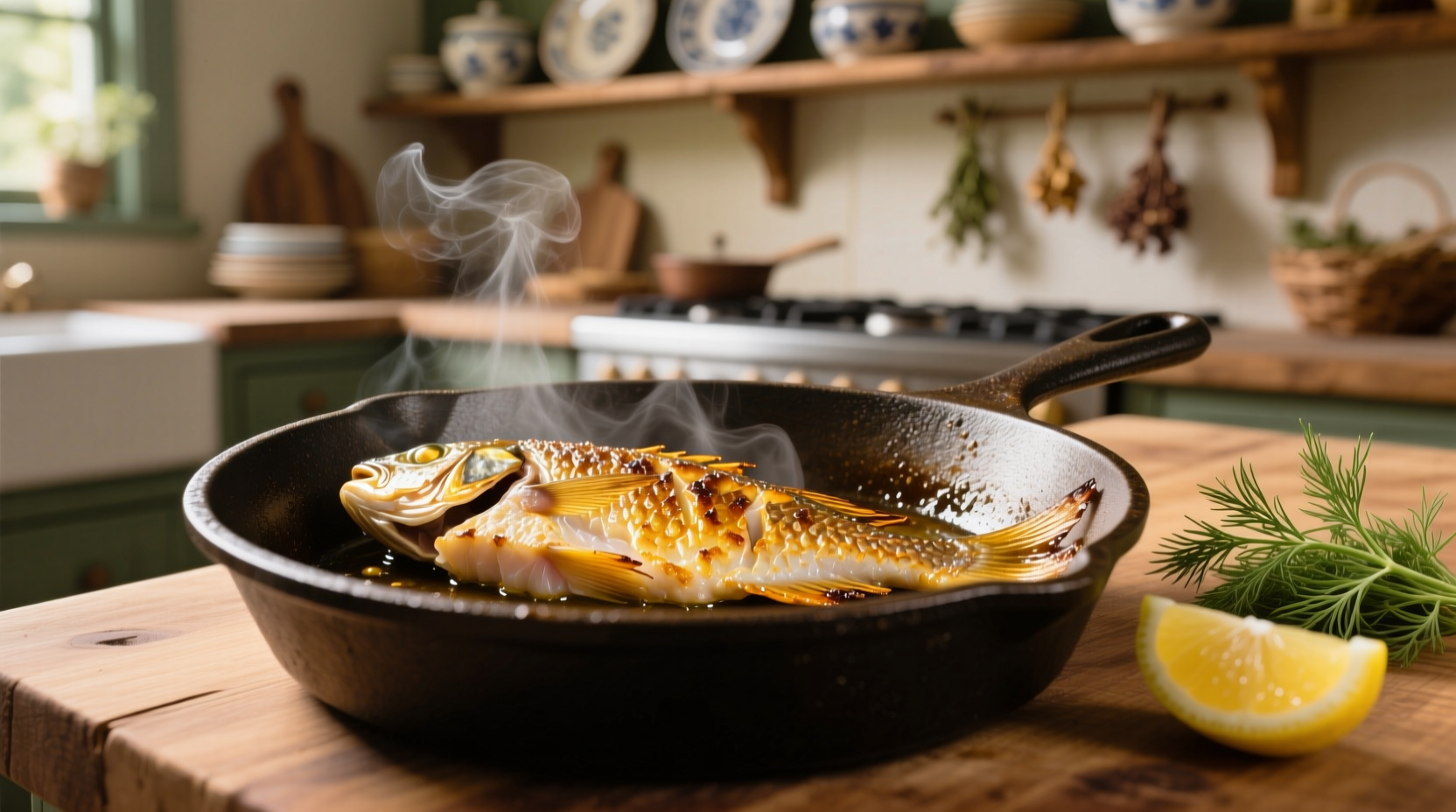Perfectly cooked stove-top tilapia requires medium-high heat, 3-4 minutes per side in a hot skillet with oil, and proper seasoning. This simple method yields flaky, moist fish with a golden crust when you use fresh fillets, avoid overcrowding the pan, and check for doneness at 145°F internal temperature.
Master Stovetop Tilapia: Your Foolproof Cooking Guide
Nothing beats the convenience of cooking tilapia right on your stove. This mild-flavored fish cooks quickly and absorbs seasonings beautifully, making it perfect for weeknight dinners. But getting that ideal golden crust without overcooking requires precise technique. Follow this professional-tested method for consistently perfect results every time.
Why Stovetop Cooking Works Best for Tilapia
Tilapia's delicate texture makes it prone to falling apart when handled incorrectly. The stovetop method provides direct, controllable heat that creates a beautiful sear while keeping the interior moist. Unlike baking which can dry out thin fillets, pan-searing locks in juices through the Maillard reaction - that magical chemical process where amino acids and sugars transform at high heat to create complex flavors and appealing color.
| Cooking Method | Texture Result | Time Required | Best For |
|---|---|---|---|
| Stovetop Searing | Golden crust, moist interior | 6-8 minutes | Thin fillets, quick meals |
| Baking | Evenly cooked, less crust | 12-15 minutes | Thicker cuts, hands-off cooking |
| Grilling | Charred exterior, smoky flavor | 8-10 minutes | Summer cooking, outdoor meals |
Your Essential Tilapia Preparation Checklist
Proper preparation makes the difference between fish that sticks to the pan and restaurant-quality results. Don't skip these critical steps:
- Dry thoroughly - Pat fillets completely dry with paper towels (moisture prevents proper searing)
- Season properly - Salt 15 minutes before cooking draws out excess moisture for better browning
- Room temperature - Let fish sit out 10 minutes before cooking for even heat distribution
- Oil selection - Use high smoke point oils like avocado or canola (smoke point 400°F+)
The Perfect Stovetop Cooking Process
Follow this precise sequence for flawless tilapia every time:
- Heat 1-2 tablespoons of oil in a heavy skillet (cast iron or stainless steel) over medium-high heat for 2-3 minutes until shimmering
- Season fish with salt, pepper, and desired spices (avoid excessive sugar-based rubs that burn)
- Carefully place fillets in hot pan, presentation side down, without touching each other
- Cook undisturbed for 3-4 minutes until golden brown and releases easily from pan
- Flip gently with a thin spatula and cook 2-3 minutes more until internal temperature reaches 145°F
- Rest 2 minutes before serving to allow juices to redistribute

How to Know When Tilapia Is Perfectly Cooked
Overcooked tilapia becomes dry and tough, while undercooked fish poses safety risks. Use these three indicators together:
- Internal temperature - 145°F at thickest part (USDA Food Safety and Inspection Service standard)
- Visual cue - Opaque white throughout with slight flakiness when gently pressed
- Texture test - Fork separates flakes easily but doesn't crumble
According to the USDA Food Safety and Inspection Service, fish is safe to eat when it reaches 145°F internally or becomes opaque and flakes easily with a fork. Tilapia's thin profile means it cooks quickly - check temperature early to prevent overcooking.
Flavor Boosters That Transform Basic Tilapia
Elevate your stovetop tilapia with these professional techniques:
- Lemon-caper finish - Add 2 tablespoons lemon juice and 1 tablespoon capers during last minute of cooking
- Herb butter baste - Spoon melted herb butter over fish during final cooking minutes
- Cornstarch dusting - Light coating creates extra crispness without heavy batter
- Aromatics in oil - Sauté garlic, shallots, or ginger in oil before adding fish
Troubleshooting Common Stovetop Tilapia Problems
Fix these frequent issues with professional solutions:
- Fish sticks to pan - Pan wasn't hot enough before adding fish or fillets weren't properly dried
- Burnt exterior, raw interior - Heat too high; reduce to medium after initial sear
- Fish falls apart - Overcrowded pan causing steaming instead of searing
- Bland flavor - Under-seasoned; salt should penetrate throughout, not just on surface
Serving Suggestions for Complete Meals
Pair your perfectly cooked tilapia with these complementary sides for balanced meals:
- Citrus-herb quinoa with roasted vegetables
- Cilantro-lime rice and black beans
- Garlic sautéed spinach with cherry tomatoes
- Mango-avocado salsa over coconut rice
For maximum freshness and sustainability, choose tilapia certified by the Aquaculture Stewardship Council. Responsibly farmed tilapia provides an excellent source of lean protein with 21g per 3-ounce serving while supporting environmentally sound practices.











 浙公网安备
33010002000092号
浙公网安备
33010002000092号 浙B2-20120091-4
浙B2-20120091-4